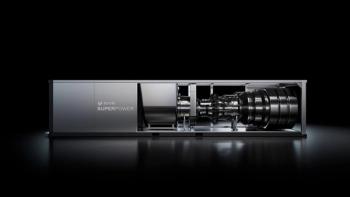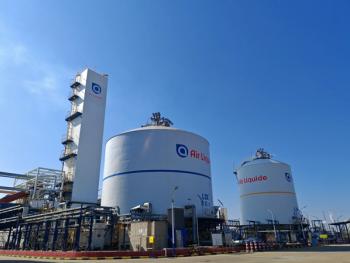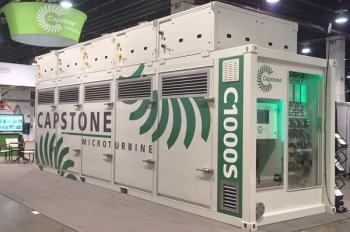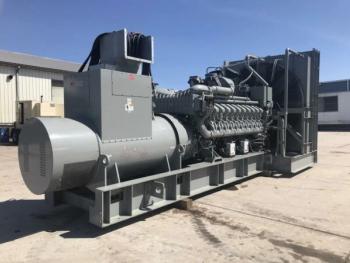In late May, GE Vernova announced that it is sending its trailer-mounted TM2500 mobile aeroderivative solution to the Bahamas to support the upcoming influx of tourists and mitigate power shortages. The mobile unit is expected to generate 30 MW of electricity for the area.
Key Takeaways
- GE Vernova deployed a 30-MW mobile power unit to the Bahamas for rapid power generation, addressing tourism needs and grid stability.
- These mobile power solutions are also crucial for quickly powering hyperscale data centers, meeting critical speed-to-power demands.
- The units offer fast setup (around two weeks) and provide stable power for grids with increasing renewables, supporting a shift to cleaner fuels.
These mobile units offer rapid deployment and quick power generation, crucial for meeting peak demand and stabilizing grids with increasing renewable energy.
To shed light on how GE Vernova is addressing the rising demand for reliable power during summer months and how its mobile aeroderivative solutions give islands such as the Bahamas a means to modernize their power generation systems and provide stable, affordable electricity, Turbomachinery International interviewed Midhat Mirabi, GE Vernova’s Managing Director of Aero New Units.
TURBO: How is GE Vernova leveraging the growing global demand for reliable power, especially in regions with increasing tourist populations or transitioning to higher renewable energy penetration?
Mirabi: GE Vernova is strategically addressing the rising global demand for reliable power by focusing on modular, flexible solutions tailored to the specific needs of regions like the Caribbean. The growth in electrification and tourism has driven a surge in energy demand—tourists typically consume more electricity due to amenities, such as air conditioning, placing additional strain on local grids.
Many Caribbean islands are small and lack the space or infrastructure for large traditional power plants. GE Vernova’s aeroderivative solutions are ideal here: modular, compact, and rapidly deployable, making them well-suited for regions with spatial constraints. Their modularity also reduces execution risks, thereby improving project bankability and financial viability.
Additionally, the increasing availability of gaseous fuels such as LNG and liquid ethane in the Caribbean provides cleaner, more efficient, and cost-effective alternatives to traditional heavy fuel oils. This fuel shift enables islands to modernize their power generation systems, moving away from older, less efficient technologies to cleaner, more sustainable solutions that support both economic growth and environmental objectives.
TURBO: Beyond supporting tourism and acting as a bridge for renewable integration, what other specific applications or industries is GE Vernova seeing an increasing need for its mobile aeroderivative solutions like the TM2500?
Mirabi: When the first TM2500 unit was deployed in the Bahamas in 2020, the primary objective was to address anticipated peak power demands for the summer, following brownouts in 2019 caused by excessive demand. The TM2500 provided not only additional power but also significantly enhanced frequency stability, enabling greater renewable energy integration by addressing variability challenges.
Beyond its core applications, the TM2500’s flexibility and modular design have become increasingly vital in supporting the rapid expansion of hyperscale data centers. As the AI race accelerates, speed-to-power is emerging as a critical competitive differentiator. These facilities often require large-scale, dependable power well before permanent infrastructure is in place. The TM2500 enables fast, reliable bridge power to meet aggressive deployment timelines. Once permanent systems are established, the unit can continue as a primary or backup power source, or be redeployed, delivering portability, reusability, and long-term value.
A prime example is the deployment of seven TM2500 units to Ecuador during the 2009 hydro crisis. Facing severe power shortages, Ecuador rapidly installed these units in Pascuales, near Guayaquil, as part of the “Luces de Navidad” (Christmas Lights) project to stabilize the grid and ensure sufficient power through the holiday season. After water levels recovered, the units were relocated to Machala, a site nearby. In Machala, the TM2500s transitioned from their original emergency role to serving as peakers and grid stability providers, eventually evolving to operate as baseload units in response to sustained demand. Notably, some of these TM2500s remain in operation in Ecuador more than 15 years later, highlighting not just their effectiveness in crisis response but also their long-term utility and durability across evolving energy needs.
This example underscores the TM2500’s ability to provide both immediate relief in emergencies and sustained value for long-term applications across diverse industries beyond tourism and renewable integration.
TURBO: What are the typical setup and teardown times for a complete mobile power plant like the one sent to the Bahamas? What resources or services does GE Vernova provide to expedite and support these processes?
Mirabi: The TM2500 and LM2500XPRESS units are specifically engineered for rapid deployment. Typically, these units can be set up within approximately two weeks with a team of around 20 people. The LM2500XPRESS requires a 220-ton crane, while the TM2500 needs only a 40-ton crane. Thanks to their modular design and a limited number of mechanical and electrical interconnections—only 25 pre-manufactured and labelled electrical cables—installation is both fast and low-risk.
In the Bahamas, the first TM2500 was installed and commissioned by GE Vernova in one month, reflecting a planned, non-emergency deployment timeline. Typically, GE Vernova provides supervisory engineers while local engineering, procurement, and construction (EPC) or engineering firms perform the installation. This hybrid model accelerates project execution by leveraging local capabilities, reduces costs, and builds in-country technical capacity.
An example of the TM2500’s rapid deployment was demonstrated at GE Vernova’s manufacturing center in Veresegyhaz, Hungary, where a fully operational TM2500 was shut down, decommissioned, transported to another site, and returned to full power within just 48 hours. Although this operation was carried out by factory personnel who were deeply familiar with the equipment, it illustrates the remarkable speed and efficiency achievable with these mobile power units.
TURBO: As islands like the Bahamas increasingly rely on renewables, how does GE Vernova's mobile power technology specifically contribute to improving grid frequency control and enabling the seamless integration of more intermittent renewable generation?
Mirabi: In the Caribbean, power generation has traditionally relied on reciprocating engines, often running on diesel or heavy fuel oil. While these engines are reliable, they have low inertia, meaning that even small fluctuations in load or generation can result in significant frequency variations on the grid, posing serious stability challenges.
The problem is exacerbated with natural gas reciprocating engines, which typically exhibit slow response times. If one unit trips, the remaining engines are often unable to ramp up quickly enough to stabilize frequency, leading to potential grid instability. This slow reaction time is a considerable drawback when integrating renewable energy sources like solar and wind, which are inherently intermittent and can cause rapid shifts in power supply.
In contrast, GE Vernova’s aeroderivative turbines—such as the TM2500 and LM2500—offer high inertia and rapid response capabilities. The dual-shaft design of these turbines allows the power-generating shaft to respond quickly and independently to fluctuations in grid frequency. When a frequency dip occurs, these turbines can swiftly ramp up their output, helping to stabilize the grid in real-time.
For instance, the LM2500 has a ramp rate that rivals much larger turbines, making it well-suited for balancing the variability introduced by renewables. This responsiveness ensures stable and reliable power even as renewable penetration increases. Beyond operational advantages, transitioning from traditional reciprocating engines to cleaner-burning natural gas turbines significantly reduces emissions, including NOx, particulate matter, and sulfur. This results in improved air quality and supports broader sustainability goals.
An illustrative case is the Bahamas, where moving from reciprocating engines to the TM2500 not only improved frequency stability, allowing for the use of more renewables, but also led to a dramatic reduction in visible emissions. The plant manager in the Bahamas noted that, upon starting the TM2500, there was no noticeable smoke—a striking contrast to the black plumes typically emitted by older reciprocating engines.
In summary, GE Vernova’s mobile power technology provides a dual benefit: It offers the grid stability necessary to support increased renewable integration while simultaneously delivering a more sustainable energy solution for island power systems.
TURBO: Beyond the Caribbean, are you seeing an uptick in mobile power? If so, what are your customers' concerns?
Mirabi: Yes, there is a notable increase in demand for mobile power solutions beyond the Caribbean, driven by the rapid expansion of data centers, the broader transition to renewable energy, and the need for emergency power after natural disasters. In all these scenarios, mobile power offers a critical bridge delivering fast, flexible, and reliable energy when and where it’s needed most.
Customers consistently tell us their top priority is speed. Whether it’s energizing a new data center, supporting grid stability, or responding to a natural disaster, they need power solutions that can be deployed in days, not months. Flexibility is equally vital. The ability to redeploy or repurpose mobile units as needs evolve offers tremendous long-term value and resilience. The Ecuador experience is a powerful example showcasing speed and adaptability of these assets over time.
Sustainability is also top of mind. As access to lower-carbon fuels like LNG and liquid ethane expands, mobile power is becoming a more environmentally viable part of the energy transition. At GE Vernova, we’re helping customers navigate this shift with modular, fuel-flexible designs and the engineering expertise to integrate seamlessly with local infrastructure.
There’s a real sense of optimism in this space. Mobile power is no longer just a short-term solution; it is a strategic enabler for countries and companies looking to build energy systems that are faster, cleaner, and more resilient for the future.






